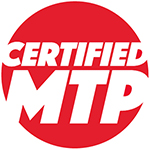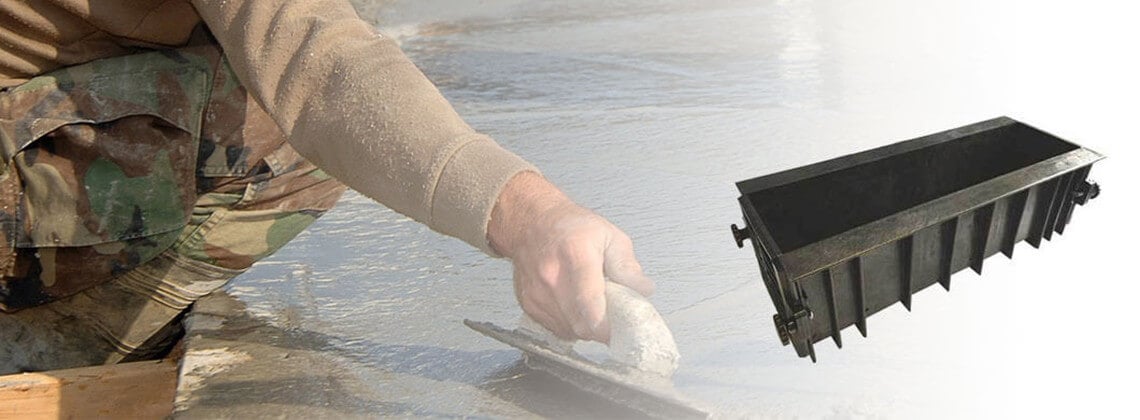What kind of material do you use when you need to test cement and make sure your concrete pour will hold up and last for years to come? If you have been searching for materials testing equipment, but you haven’t been lucky enough to find exactly what you are looking for, you need CertifiedMaterialsTestingProducts.com.
Explore Beam Testing Solutions!
When you decide that CertifiedMaterialsTestingProducts.com is for you, you will quickly realize that we have everything you’ve been dreaming about and more! We have everything from beam testing equipment to corrosion testing. The sky’s the limit when you shop online with CertifiedMTP.com. A great product, if you are looking to test beams you have just set in place, is by purchasing the Plastic Concrete Beam Mold. This mold is definitely a durable product. It comes a size of 6” x 6” x 21” and meets many different test methods.
You can find the methods it meets online now to be sure it will work for the job you are completing. More specs about this product include ribbed interlocking parts that can hold all of the specific dimensions and shapes securely, without worry. Don’t worry, the interior of this mold is smooth so that water cannot sneak in.
Choose Superior Cement Testing Equipment
So, when it comes to testing cement, it’s important to use superior products. Choose high-quality equipment and testing solutions to ensure accurate and reliable results. From cement testing machines to chemical analysis kits, investing in superior products will enhance the quality of your cement testing processes and outcomes.
If you need to purchase any materials testing equipment to replace or add to your lab supplies, shop at Certified Materials Testing Products for your one-stop shop for all your testing products including all that you need to test cement with superior products. Contact us today with any questions or concerns you have about the products you are checking out.
Cement testing is a critical part of the construction process, ensuring the quality, strength, and durability of cement, which in turn affects the overall integrity of concrete structures. This 1500-word overview delves into the various aspects and importance of cement testing.
Keep Reading: ASTM C39: Guide to Concrete Compressive Strength Tests.
Test Cement Introduction
Cement, a key ingredient in concrete, binds other materials together. Its properties significantly impact the strength, workability, and durability of concrete. Therefore, testing cement is crucial to ascertain its suitability for construction purposes.
1. Importance of Test Cement
Testing cement provides several key benefits:
– Test Cement Quality Assurance: Ensures the cement meets required quality standards.
– Test Cement Strength Verification: Confirms the strength properties of the cement, which affects the load-bearing capacity of structures.
– Compliance with Standards: Verifies adherence to national and international building codes.
– Durability Assessment: Evaluate the long-term performance of cement under various environmental conditions.
2. Key Properties of Cement Test
Cement testing focuses on several critical properties:
– Fineness: The particle size of cement, which influences its rate of hydration and strength development.
– Consistency: The amount of water required to achieve a standard consistency, indicative of the cement’s workability.
– Test Cement Setting Time: The time taken for cement to start and finish setting, affects the working time for concrete.
– Strength: The compressive and tensile strength of cement, determining the load it can bear.
– Soundness: Ensuring that the cement does not undergo excessive expansion after setting, which can cause cracks.
3. Types of Test Cement
Various tests are conducted to evaluate different characteristics of cement:
a. Fineness Test Cement
This test measures the particle size of cement. Methods include the sieve test and air permeability test (Blaine method). Finer cement reacts faster with water and develops strength more quickly.
b. Consistency Test Cement
The standard consistency test, often conducted using a Vicat apparatus, determines the amount of water required to produce a cement paste of standard consistency, crucial for preparing test specimens.
c. Setting Time Test Cement
The Vicat apparatus is also used to determine the initial and final setting times of cement. This test is vital for understanding the working time for mixing and placing concrete.
d. Strength Test Cement
Compressive and tensile strength tests are performed using a testing machine. Cement is mixed with a standard proportion of sand and water to form mortar and then molded into cubes or briquettes for testing.
e. Soundness Test Cement
The soundness test, such as the Le Chatelier test, measures the volume expansion of cement. Unsound cement can cause cracks and disintegration in concrete.
f. Heat of Hydration Test Cement
This test measures the heat released during the cement hydration process, which can impact the curing of concrete, especially in large structures.
4. Sampling and Standard Procedures
Proper sampling is crucial for accurate testing. Samples should be representative of the entire batch and handled to prevent contamination or moisture loss. Testing methods should adhere to standards like ASTM (American Society for Testing and Materials) or EN (European Standards).
5. Laboratory vs. Field Testing
Cement testing can be categorized into two types:
a. Laboratory Testing
Conducted in controlled environments, laboratory tests provide precise measurements and are essential for quality control and research purposes.
b. Field Testing
Field tests are simpler and quicker, offering immediate, albeit less precise, results. They are useful for on-site quality checks.
More Read: How is Concrete Tested for Strength and Durability?
6. Modern Technology in Cement Testing
Technological advancements have led to more sophisticated and accurate cement testing methods. Automated equipment, digital analyzers, and non-destructive testing techniques are increasingly being adopted.
7. Challenges in Cement Testing
Cement testing faces several challenges:
– Variability in Results: Results can vary due to differences in sample preparation, testing conditions, and operator skill.
– Cost and Time Constraints: High-precision tests can be expensive and time-consuming.
– Environmental Factors: Conditions like temperature and humidity can affect test results.
8. Environmental and Sustainability Considerations
With growing environmental awareness, testing for eco-friendly properties like low carbon emission and energy-efficient production processes is becoming increasingly important.
9. Future Trends
The future of cement testing is likely to see a greater emphasis on sustainability, the use of artificial intelligence for predictive analysis, and further automation to increase efficiency and accuracy.
Conclusion
Cement testing is a fundamental aspect of ensuring the safety and durability of concrete structures. With the ongoing advancements in testing methodologies and a growing focus on sustainable practices, the role of cement testing in construction continues to evolve, promising more reliable and environmentally conscious building practices.

